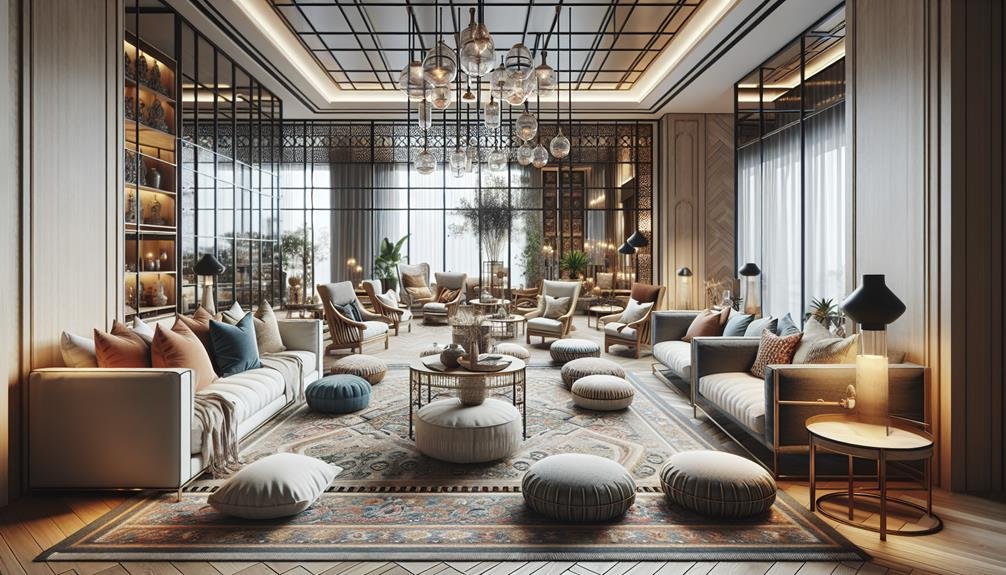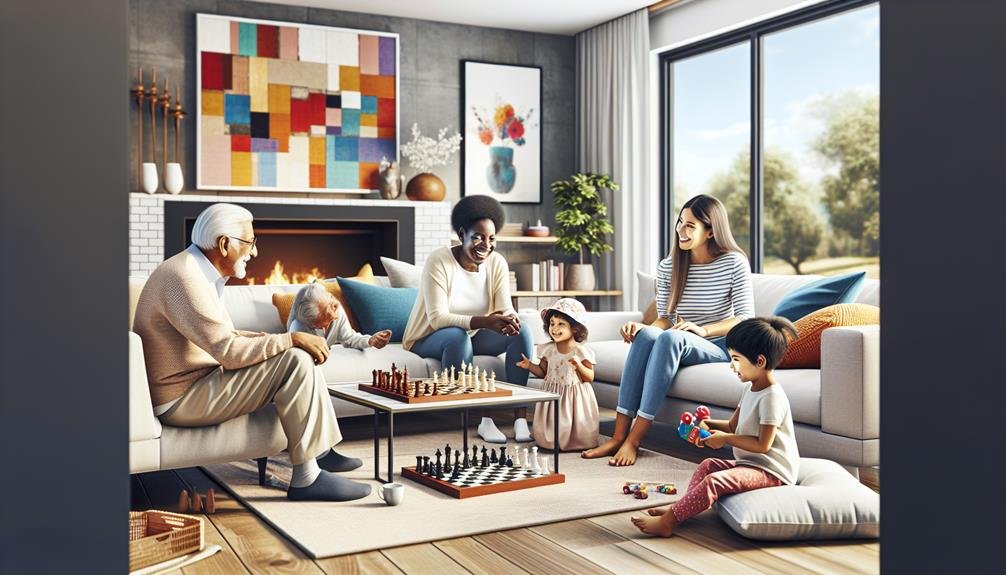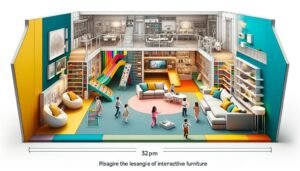In the realm of architectural design, the emphasis on creating multi-generational family spaces carries profound implications that extend beyond mere aesthetics.
The integration of diverse age groups within a shared environment presents a unique opportunity to address evolving societal needs and familial dynamics.
By exploring the symbiotic relationship between spatial configurations and intergenerational interactions, designers can unlock a realm of possibilities that cater to the intricate tapestry of family life.
But what specific elements make this endeavor so crucial, and how do they shape the very essence of our living environments?
Key Takeaways
- Strengthens family bonds and togetherness through shared spaces and activities.
- Promotes inclusivity and flexibility to accommodate diverse needs and evolving preferences.
- Enhances comfort and value for all ages by prioritizing functionality and well-being.
- Cultivates a supportive environment for personal growth, unity, and shared responsibilities.
Benefits of Multi-Generational Spaces
What are the advantages of integrating multi-generational spaces into residential design?
Designing living spaces that cater to multi-generational living offers a plethora of benefits. Firstly, it fosters a sense of togetherness and strengthens family bonds as different generations interact and support each other in their daily lives. Moreover, shared spaces in such designs promote cultural exchange and shared experiences, enriching the lives of all family members involved.
Financial savings are another significant advantage, as pooling resources and sharing living expenses can lead to substantial monetary benefits for all. Additionally, having multiple generations under one roof enhances safety by ensuring there is always someone around to provide assistance or support when needed.
Balancing privacy and autonomy within these designs is crucial to maintaining individuality while still promoting a sense of unity and interconnectedness among family members. In essence, integrating multi-generational spaces into residential design offers a holistic approach to living that combines the best of both worlds – independence and familial support.
Enhancing Family Connections Through Design
Enhancing family connections through thoughtful design fosters a deeper sense of unity and understanding among different generations living together. This approach to designing multi-generational spaces focuses on creating environments that facilitate meaningful interactions and strengthen familial bonds.
Here are three key ways in which design can enhance family connections:
- Facilitating Communication: Well-thought-out spaces can encourage open communication among family members, leading to better understanding and empathy.
- Promoting Togetherness: Designing communal areas that cater to the needs and preferences of all generations can promote shared activities and quality time spent together.
- Fostering a Sense of Belonging: Design elements that reflect the family's values and history can create a sense of belonging and identity, reinforcing the family unit.
Inclusivity and Flexibility in Living Spaces

In designing multi-generational family spaces, prioritizing inclusivity and flexibility is crucial to ensuring a welcoming and adaptable environment for individuals of all ages and abilities.
Inclusivity in design guarantees that living spaces are accessible and usable by individuals with diverse needs, while flexibility allows for easy adaptation to meet changing preferences and requirements of different generations.
By adhering to universal design principles, spaces can cater to a wide range of abilities and preferences, promoting inclusivity.
Adaptable living spaces are essential as they accommodate evolving family dynamics and lifestyles, fostering a sense of belonging for all generations.
Emphasizing inclusivity and flexibility enhances the functionality and comfort of multi-generational family spaces, ensuring that they are not only accessible but also user-friendly.
This approach acknowledges the varying needs within families and creates environments that are adaptable to different circumstances, ultimately contributing to the usability and satisfaction of all occupants in multi-generational family spaces.
Promoting Comfort and Value for All Ages
Considering the diverse needs of multi-generational family members, promoting comfort and value for all ages in design is paramount for creating a harmonious and welcoming living environment.
Inclusive design, catering to diverse age groups, is essential for ensuring that every family member feels comfortable and valued. Enhancing functionality and the usability of living spaces is crucial to accommodate the varying requirements of different generations, promoting a sense of belonging for all.
By creating a harmonious environment that caters to different ages, multi-generational family spaces not only provide immediate comfort but also add long-term value to the home. This value is further emphasized by designing to meet the evolving needs of the residents, ensuring that the space remains relevant and functional for years to come.
Prioritizing the promotion of comfort and value for all ages in multi-generational design not only fosters a welcoming atmosphere but also contributes to the overall well-being of the family unit.
The Impact of Multi-Generational Design

The incorporation of multi-generational design principles in living spaces has a significant impact on fostering family bonding, shared responsibilities, and emotional well-being.
Multi-generational design promotes family bonding and emotional support, creating a supportive environment that nurtures stronger relationships. By enabling shared responsibilities, this design approach not only fosters financial savings but also instills a sense of security within the family unit.
The emphasis on both privacy and shared spaces within multi-generational design caters to individual needs while promoting togetherness, enhancing inclusivity, and harmony. This inclusive design accommodates various lifestyle differences and preferences, ensuring that every family member feels valued and understood.
Ultimately, multi-generational design cultivates a supportive environment that contributes to the emotional well-being and personal growth of all family members, fostering a sense of belonging and unity within the household.
Frequently Asked Questions
Why Are Multigenerational Households Important?
Multigenerational households are important due to their economic benefits, emotional support, cultural exchange opportunities, and enhanced safety and security. They foster family cohesion, contribute to financial stability, and provide a sense of belonging and shared responsibility.
What Are the Advantages of a Multigenerational Approach What Are the Disadvantages?
A multigenerational approach offers diverse perspectives, shared responsibilities, and emotional support within families. However, challenges such as privacy issues and communication barriers may arise. Clear boundaries and open dialogue are essential for harmonious coexistence in such settings.
What Is Multi Generational Design?
Multi-generational design involves creating living spaces that cater to the needs of diverse age groups within a family. It focuses on inclusivity, adaptability, and safety to promote harmony and well-being, enhancing intergenerational interactions and quality of life.
What Are the Benefits of Having More Than One Generation of Family Members Living Under One Roof?
Having more than one generation of family members living under one roof brings emotional support, financial savings, diverse perspectives, cultural exchange, enhanced safety, and privacy. It fosters stronger family bonds, enriches experiences, and ensures mutual care and security.


